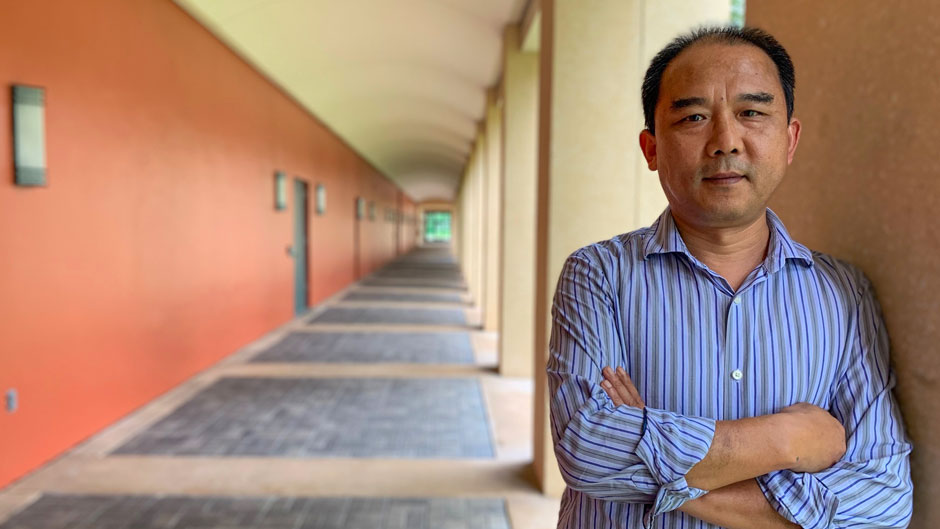The third time proved the charm for NASA’s ambitious Artemis I Space Launch System. After two previous launches were scrubbed, the agency’s most powerful rocket ever blasted off from the Kennedy Space Center in Cape Canaveral, Florida, early Wednesday, carrying an uncrewed Orion space capsule that will travel 40,000 miles beyond the Moon and return to Earth over the course of 25 days.
Nearly 50 years after humans last set foot on the moon, this successful launch brings the nation a giant step closer to astronauts returning to the lunar surface.
A University of Miami College of Engineering researcher is helping to develop new materials that could ensure the success of future missions to the moon and, perhaps, beyond.
Qingda Yang, a professor of mechanical and aerospace engineering, is working with a team of University of Central Florida (UCF) scientists to design, synthesize, manufacture, test, and model new ceramic matrix composites (CMCs) that could enable sustained hydrogen combustion and help prevent hydrogen leaks like the one that scrubbed the Sept. 4 Artemis launch.
Funded by a $1 million grant from the U.S. Department of Energy, the project has applications in hydrogen-based turbines for electricity production, hydrogen-powered space travel and storage, and the transportation of hydrogen.
Because of hydrogen’s small molecular size, it can easily breach containment and enter defects such as voids, cracks, and crevices, causing materials to become brittle. “And that would be a significant problem because hydrogen is extremely reactive and explosive,” Yang said.
So, he and a team of UCF researchers are endeavoring to create high-temperature CMCs and nano-ceramic coatings that can contain hydrogen and be used to construct an inner wall of the hydrogen combustion chamber.
“An ultra-high temperature combustion chamber is our dream project,” said Jan Gou, a professor in UCF’s Department of Mechanical and Aerospace Engineering and the project’s lead investigator. “It has been long-desired for next-generation gas turbine engines, aircraft engines, and rocket engines.”
The material will be tested in a high-pressure combustion environment at UCF’s Center for Advanced Turbine and Energy Center.
Yang will oversee the modeling component of the project.
“While our project is not funded by NASA, if the material system works out as expected, we will certainly reach out to the agency for its applications in fuel tanks and even rocket nozzles,” Yang said. “And what’s important to remember is that this work has important implications for the future of hydrogen power, providing cleaner energy for our societal needs.”


